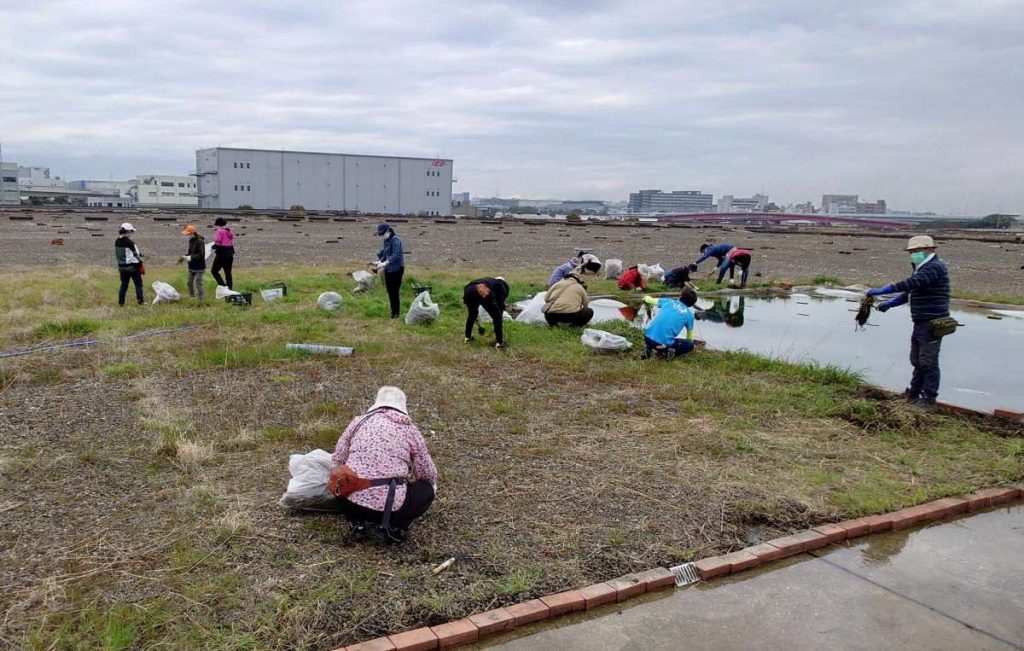
A little tern raising its young on the roof of the Morigasaki Water Reclamation Center of the Tokyo Metropolitan Government's Bureau of Sewerage in July, Ota Ward, Tokyo (Photo courtesy of Little Tern Project).
Showajima in Ota Ward of Tokyo is one of several artificial islands situated in Tokyo Bay. Here, every spring, the little tern, a migratory bird, comes to breed. The site is the roof of the Morigasaki Water Reclamation Center of the Tokyo Metropolitan Government's Bureau of Sewerage.
The roof is also host to activities by a group of people working to protect the little tern. These are the members and volunteers of the Little Tern Project (LTP), a non-profit organization dedicated to the conservation of this bird, which is at high risk of extinction in Japan.
Little terns (Sternula albifrons) are 20 to 30 centimeters long and nest in hollows in sand or gravel near water, where they lay their eggs. In the spring, they fly to Japan from Australia and New Zealand in the southern hemisphere. They breed and return south in the summer and autumn. Their numbers have been decreasing in Japan in recent years, mainly due to the development of waterfront areas.
Masayuki Matsumura, 68, a member of LTP's board of directors, commented on the little tern. "It makes us happy to see them come to Japan from distant countries, raise their young, and then fly away again," he says.
Trial and Error in Conservation
It was in 2001 that little terns were first found nesting on the roof of the Reclamation Center. The hard concrete roof provided a warm place for their eggs. Those who discovered the birds consulted with the Tokyo Metropolitan Government's Bureau of Sewerage and the Ota Ward local government. The LTP was established and activities began to facilitate the bird's nesting on the rooftop.

Soil made from sludge from the reclamation center that was treated with high heat and crushed shells were spread to create an environment conducive to nesting. The following year, about 2,000 birds flew into the area as the project got off to a great start.
Read the rest of this article here to learn more about the efforts to conserve the vulnerable little tern. And find more great articles on the environment and the challenges of achieving the SDGs on our new website Japan 2 Earth (J2E), sparking a transition to the future.
RELATED:
- [Hidden Wonders of Japan] Pygmy Woodpeckers in Roppongi Show the Future of Urban Biodiversity
- Akiruno City Makes Headway in Saving the Endangered Tokyo Salamander
(Read this article in Japanese at this link.)
Author: Masanori Hashimoto, The Sankei Shimbun







